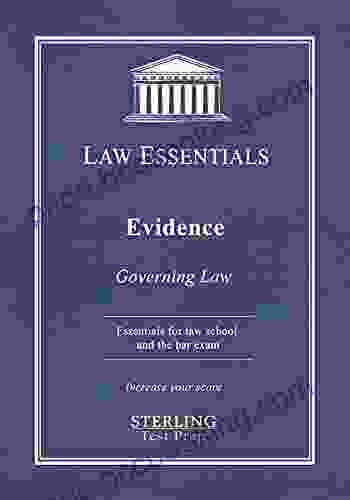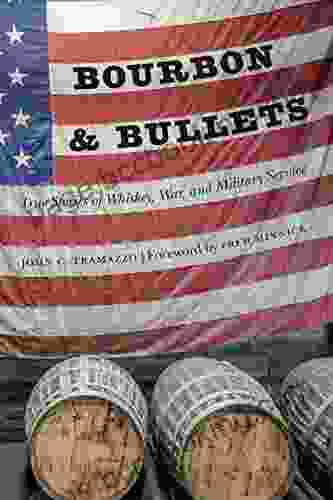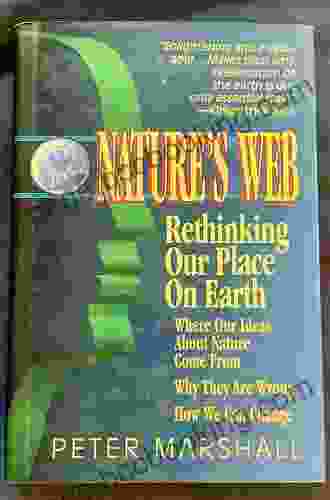Master the Art: A Comprehensive Guide to Oil Painting Tools and Materials for Beginners

Embark on Your Artistic Journey
Welcome to the world of oil painting, a captivating medium that has captivated artists for centuries. Whether you're a budding artist or an aspiring professional, this comprehensive guide will equip you with the essential knowledge you need to navigate the tools and materials of oil painting.
4.4 out of 5
| Language | : | English |
| File size | : | 1348 KB |
| Text-to-Speech | : | Enabled |
| Screen Reader | : | Supported |
| Enhanced typesetting | : | Enabled |
| Print length | : | 14 pages |
| Lending | : | Enabled |
Join us as we delve into the world of canvases, brushes, paints, and mediums, unlocking the secrets of this versatile and rewarding art form. With clear explanations and expert tips, this guide will empower you to unleash your creativity and produce stunning works of art.
Your Painting's Foundation: Choosing the Right Canvas
The canvas is the foundation of your painting, providing the surface on which your artistic vision will take shape. When selecting a canvas, consider the following factors:
- Size: The size of the canvas should be proportional to the scale of your painting. Larger canvases offer more space for detail and expression, while smaller canvases are ideal for sketches or studies.
- Shape: Canvases come in various shapes, from traditional rectangles and squares to unconventional shapes like ovals and hexagons. Choose a shape that complements your composition and suits your artistic style.
- Material: Canvases can be made of linen, cotton, or synthetic materials. Linen is known for its durability and beautiful texture, while cotton is a more affordable option. Synthetic canvases offer a smooth, uniform surface.
- Gesso: Gesso is a white primer applied to the canvas to create a receptive surface for paint. It provides a barrier between the canvas and the paint, preventing absorption and ensuring optimal adhesion.
The Tools of Your Trade: Essential Brushes for Oil Painting
Brushes are the instruments that translate your ideas onto the canvas. Choosing the right brushes is crucial for controlling the flow of paint and achieving the desired effects.
Oil painting brushes are typically made of natural fibers such as hog bristles or sable hair. Hog bristles are stiffer and suitable for applying thick, impasto layers, while sable hair brushes are softer and ideal for detailed work and blending.
Brush sizes and shapes vary greatly, each serving a specific purpose:
- Round brushes: Pointed tips for detail work and fine lines.
- Flat brushes: Flat, square-edged bristles for applying even layers of paint and creating broad strokes.
- Filbert brushes: Oval-shaped bristles for blending and creating smooth transitions.
- Fan brushes: Fan-shaped bristles for softening edges and creating atmospheric effects.
- Palette knives: Metal blades for mixing paint, applying thick layers, and scraping away excess paint.
The Vibrant Colors: Exploring Oil Paints
Oil paints are renowned for their rich, vibrant colors and long-lasting quality. Made from pigments suspended in oil, they offer a wide range of hues and consistencies.
- Pigments: Pigments are the colorants in oil paints. They are sourced from natural materials like minerals, plants, and animals, or synthetically produced.
- Oil: The oil used in oil paints typically comes from linseed, sunflower, or poppy seeds. Different oils have different properties that affect the drying time and consistency of the paint.
- Opacity: Oil paints are classified as transparent, semi-transparent, or opaque. Transparent paints allow underlying layers to show through, while opaque paints completely cover them.
- Viscosity: Viscosity refers to the thickness of the paint. Thicker paints, such as impasto paints, can be applied in thick layers to create texture and depth.
Enhancing Your Palette: Essential Painting Mediums
Painting mediums are substances added to oil paints to modify their properties. They can be used to alter drying time, increase flow, improve transparency, or create special effects.
- Linseed oil: A traditional medium that enhances flow and increases drying time.
- Turpentine: A solvent that thins paint and speeds up drying time. It can also be used for cleaning brushes and equipment.
- Stand oil: A thickened form of linseed oil that provides a glossy finish and slows down drying time.
- Galkyd medium: A synthetic medium that increases flow and drying time without yellowing.
- Glazing medium: A medium that creates a transparent layer, allowing underlying colors to show through.
Unlocking Your Artistry: Tips and Techniques for Oil Painting
Mastering the art of oil painting requires patience, practice, and a willingness to experiment. Here are some invaluable tips and techniques to elevate your artistic journey:
- Layering: Oil paints dry slowly, allowing you to build up layers of color and create depth and texture.
- Glazing: Applying thin, transparent layers of paint over dried layers allows for subtle color variations and luminous effects.
- Impasto: Applying thick layers of paint with a palette knife or brush creates a textured, sculptural effect.
- Blended transitions: Use a clean brush and paint medium to blend colors smoothly, creating harmonious transitions.
- Underpainting: Start with a monochrome underpainting to establish the composition and values before adding color.
Your Artistic Odyssey Begins
With the knowledge and tools you've gained in this comprehensive guide, you're now equipped to embark on your artistic journey with confidence. Remember, the beauty of oil painting lies not only in the finished product but also in the creative process itself. Experiment, explore, and embrace the endless possibilities that this versatile medium has to offer.
As you progress, seek inspiration from master painters, attend workshops, and share your creations with others. The world of oil painting is a welcoming community, eager to support your artistic growth and celebrate your unique vision.
May this guide serve as a constant companion on your artistic odyssey. Happy painting!
4.4 out of 5
| Language | : | English |
| File size | : | 1348 KB |
| Text-to-Speech | : | Enabled |
| Screen Reader | : | Supported |
| Enhanced typesetting | : | Enabled |
| Print length | : | 14 pages |
| Lending | : | Enabled |
Do you want to contribute by writing guest posts on this blog?
Please contact us and send us a resume of previous articles that you have written.
 Book
Book Novel
Novel Page
Page Chapter
Chapter Text
Text Story
Story Genre
Genre Reader
Reader Library
Library Paperback
Paperback E-book
E-book Magazine
Magazine Newspaper
Newspaper Paragraph
Paragraph Sentence
Sentence Bookmark
Bookmark Shelf
Shelf Glossary
Glossary Bibliography
Bibliography Foreword
Foreword Preface
Preface Synopsis
Synopsis Annotation
Annotation Footnote
Footnote Manuscript
Manuscript Scroll
Scroll Codex
Codex Tome
Tome Bestseller
Bestseller Classics
Classics Library card
Library card Narrative
Narrative Biography
Biography Autobiography
Autobiography Memoir
Memoir Reference
Reference Encyclopedia
Encyclopedia William Tuohy
William Tuohy Nikhil Bhardwaj
Nikhil Bhardwaj T J Tomasi
T J Tomasi Peter Bolstorff
Peter Bolstorff Original Ed Edition Kindle Edition
Original Ed Edition Kindle Edition Paul Esajian
Paul Esajian Thomas Booth
Thomas Booth Tom Jordan
Tom Jordan Verwayne Greenhoe
Verwayne Greenhoe Peter Morgan
Peter Morgan Scott Dominic Carpenter
Scott Dominic Carpenter Viktor Vagon
Viktor Vagon Paul J Nahin
Paul J Nahin Phillip Starr
Phillip Starr Patty Gelman
Patty Gelman Robbin Gregory
Robbin Gregory Peter Schmitt
Peter Schmitt Rosalyn Sheehy
Rosalyn Sheehy Sally Bjornsen
Sally Bjornsen Tony Hefner
Tony Hefner
Light bulbAdvertise smarter! Our strategic ad space ensures maximum exposure. Reserve your spot today!

 Henry David ThoreauThe Shariyat Ki Sugmad One Two: A Must-Read Book on the History of Islam
Henry David ThoreauThe Shariyat Ki Sugmad One Two: A Must-Read Book on the History of Islam
 Brent FosterMaster Chemistry for the IB Diploma: Unlock Your Academic Potential with the...
Brent FosterMaster Chemistry for the IB Diploma: Unlock Your Academic Potential with the... Joseph ConradFollow ·2.9k
Joseph ConradFollow ·2.9k Jason HayesFollow ·12.9k
Jason HayesFollow ·12.9k Sam CarterFollow ·17.5k
Sam CarterFollow ·17.5k Travis FosterFollow ·8.4k
Travis FosterFollow ·8.4k Allen GinsbergFollow ·6.6k
Allen GinsbergFollow ·6.6k David BaldacciFollow ·10.6k
David BaldacciFollow ·10.6k Nick TurnerFollow ·11.3k
Nick TurnerFollow ·11.3k Milton BellFollow ·3.2k
Milton BellFollow ·3.2k

 Marvin Hayes
Marvin HayesGoverning Law for Law School and Bar Exam Prep: Your...
Unlock the Secrets of...

 Sidney Cox
Sidney CoxUnveiling the Epic Tales of Whiskey, War, and Military...
In the tapestry of history,...

 Victor Turner
Victor TurnerGoverning Law for Law School and Bar Exam Prep: The...
What is Governing...

 Robert Browning
Robert BrowningSterling Test Prep MCAT General Chemistry Practice...
: Embark on Your MCAT General Chemistry...
4.4 out of 5
| Language | : | English |
| File size | : | 1348 KB |
| Text-to-Speech | : | Enabled |
| Screen Reader | : | Supported |
| Enhanced typesetting | : | Enabled |
| Print length | : | 14 pages |
| Lending | : | Enabled |












